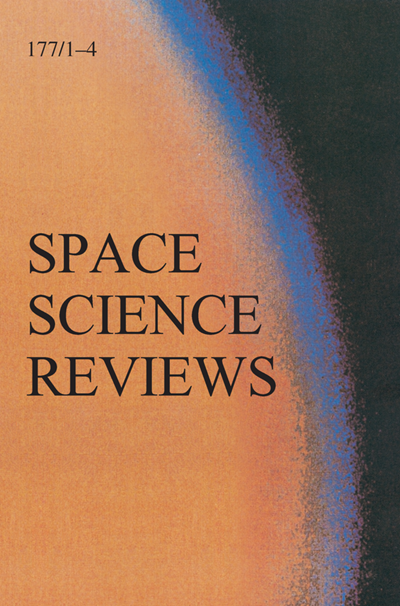Magma Ocean, Water, and the Early Atmosphere of Venus
IF 7.4
2区 物理与天体物理
Q1 ASTRONOMY & ASTROPHYSICS
引用次数: 5
Abstract
Abstract The current state and surface conditions of the Earth and its twin planet Venus are drastically different. Whether these differences are directly inherited from the earliest stages of planetary evolution, when the interior was molten, or arose later during the long-term evolution is still unclear. Yet, it is clear that water, its abundance, state, and distribution between the different planetary reservoirs, which are intimately related to the solidification and outgassing of the early magma ocean, are key components regarding past and present-day habitability, planetary evolution, and the different pathways leading to various surface conditions. In this chapter we start by reviewing the outcomes of the accretion sequence, with particular emphasis on the sources and timing of water delivery in light of available constraints, and the initial thermal state of Venus at the end of the main accretion. Then, we detail the processes at play during the early thermo-chemical evolution of molten terrestrial planets, and how they can affect the abundance and distribution of water within the different planetary reservoirs. Namely, we focus on the magma ocean cooling, solidification, and concurrent formation of the outgassed atmosphere. Accounting for the possible range of parameters for early Venus and based on the mechanisms and feedbacks described, we provide an overview of the likely evolutionary pathways leading to diverse surface conditions, from a temperate to a hellish early Venus. The implications of the resulting surface conditions and habitability are discussed in the context of the subsequent long-term interior and atmospheric evolution. Future research directions and observations are proposed to constrain the different scenarios in order to reconcile Venus’ early evolution with its current state, while deciphering which path it followed.岩浆、海洋、水和金星的早期大气
地球和它的孪生行星金星的现状和表面条件是截然不同的。这些差异是直接遗传自行星演化的早期阶段,当时内部是熔融的,还是在后来的长期演化过程中产生的,目前还不清楚。然而,很明显,水,它的丰度、状态和分布在不同的行星储层之间,这与早期岩浆海洋的凝固和排气密切相关,是过去和现在的可居住性、行星演化以及导致各种表面条件的不同途径的关键组成部分。在本章中,我们首先回顾了吸积序列的结果,特别强调了根据可用的约束条件,水输送的来源和时间,以及金星在主吸积结束时的初始热状态。然后,我们详细介绍了熔融类地行星早期热化学演化的过程,以及它们如何影响不同行星储层中水的丰度和分布。也就是说,我们关注的是岩浆海洋的冷却、凝固和同时形成的脱气大气。考虑到早期金星的可能参数范围,并基于所描述的机制和反馈,我们概述了导致不同表面条件的可能进化途径,从温和的早期金星到地狱般的早期金星。在随后的长期内部和大气演变的背景下,讨论了由此产生的表面条件和可居住性的含义。我们提出了未来的研究方向和观测结果,以约束不同的情景,以调和金星的早期演化与当前状态,同时破译它所遵循的路径。
本文章由计算机程序翻译,如有差异,请以英文原文为准。
求助全文
约1分钟内获得全文
求助全文
来源期刊

Space Science Reviews
地学天文-天文与天体物理
CiteScore
19.70
自引率
3.90%
发文量
60
审稿时长
4-8 weeks
期刊介绍:
Space Science Reviews (SSRv) stands as an international journal dedicated to scientific space research, offering a contemporary synthesis across various branches of space exploration. Emphasizing scientific outcomes and instruments, SSRv spans astrophysics, physics of planetary systems, solar physics, and the physics of magnetospheres & interplanetary matter.
Beyond Topical Collections and invited Review Articles, Space Science Reviews welcomes unsolicited Review Articles and Special Communications. The latter encompass papers related to a prior topical volume/collection, report-type papers, or timely contributions addressing a robust combination of space science and technology. These papers succinctly summarize both the science and technology aspects of instruments or missions in a single publication.
 求助内容:
求助内容: 应助结果提醒方式:
应助结果提醒方式:


